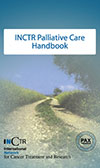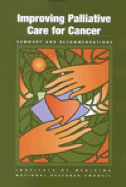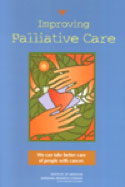Palliative Care Showcase
What is Palliative Care?
Palliative care improves quality of life for patients and families facing serious or chronic illness — whatever the diagnosis or prognosis. It prevents and relieves suffering by addressing pain as well as the physical, emotional, psycho-social and spiritual problems associated with serious and chronic conditions. (California State University Institute for Palliative Care at CSU San Marcos)
What Does Palliative Care Do?
- Provides relief from pain and other distressing symptoms.
- Enhances quality of life, and may also positively influence the course of illness.
- Integrates the psychological and spiritual aspects of patient care.
- Uses an interdisciplinary team approach to address the needs of patients and their families. This typically includes a physician, nurse, social worker, pharmacist, chaplain and others as needed.
- Offers a support system to help patients live as actively as possible throughout the course of an illness.
- Offers a support system to help loved ones cope with stress during the patients' illness and in their own bereavement.
- Is applicable early in the course of illness, in conjunction with other therapies that are intended to cure an illness or prolong life, such as chemotherapy, radiation therapy, surgical procedures, etc.
- Affirms life and regards dying as a normal process.
Free Resources about Palliative Care For Your Use:
MERLOT –OERC provides a collection of free educational resources on palliative care
Here are some comprehensive resources:
 |
INCTR (International Network for Cancer Treatment and Research) provides a free downloadable handbook on palliative care. The Table of Contents provides a full range of guidance on palliative care topics. |
 |
Caring for the Human Spirit in 2014 (PDF) is a collection of articles organized by the CSU Institute for Palliative Care and the HealthCare Chaplaincy Network on chaplaincy and palliative care topics along with a dose of career advice for any chaplain seeking to improve their palliative care skills and their impact on the organizations and people they serve. Some of the articles to follow come from HealthCare Chaplaincy Network’s newsletter PlainViews®, the preeminent online professional journal for chaplains and other spiritual care providers. Other articles come from the staff of the Institute. |
 |
Improving Palliative Care for Cancer (2001) is a handbook produced by the Institute of Medicine of the National Academies, part of the US National Academies of the Sciences. In this report, The IOM National Cancer Policy Board examines the barriers - economic, policy, social and scientific - that keep people from getting good palliative care, and proposes a series of steps that could improve this situation. |
 |
Improving Palliative Care: We Can Take Better Care of People With Cancer (2003) is a handbook produced by the Institute of Medicine, National Research Council of the National Academies, part of the US National Academies of the Sciences. This booklet summarizes the findings and recommendations of Improving Palliative Care for Cancer (2001), for the lay reader. It describes the types of palliative care --"comfort care"-- that should be there for people dying from cancer, and the reasons why, too often, people suffer needlessly without it. The concrete steps that could be taken by society and individuals to improve access to palliative care are also laid out, in the recommendations. |
 |
Palliative Medicine & Care: Open Access is an open access journal covering all the diseases, symptoms, pain and stress of a serious illness. The journal aims to provide knowledge for the readers and specialists throughout the globe with high quality. The journal is a peer reviewed journal and which includes medical, psychological, end of life care issues focus to improve the quality of patient’s life. It also welcomes relevant original research papers, review, short communications, case reports, letter to editor’s etc. related to palliative medicine. |
Pallium India is a national registered charitable trust formed to fulfill the need for a stable organization working at the national level to fight for needs of the suffering millions in India who are in need of pain relief and palliative care. Most of the trustees are people who have done pioneering work in the field of palliative care in the country. Pallium India’s mission is to catalyze the development of effective pain relief and quality palliative care services across India through delivery of services, education, research, advocacy and information
Explore their website that provides a directory of Palliative Care Services, Courses, Newsletters, Activities, and an overview of Palliative Care.

The California State University Institute for Palliative Care at Cal State San Marcos helps to ensure that California has what it needs to meet the challenges these needs present, today and tomorrow. The Institute provides professional development programs and partners with communities to organize events on palliative care.

